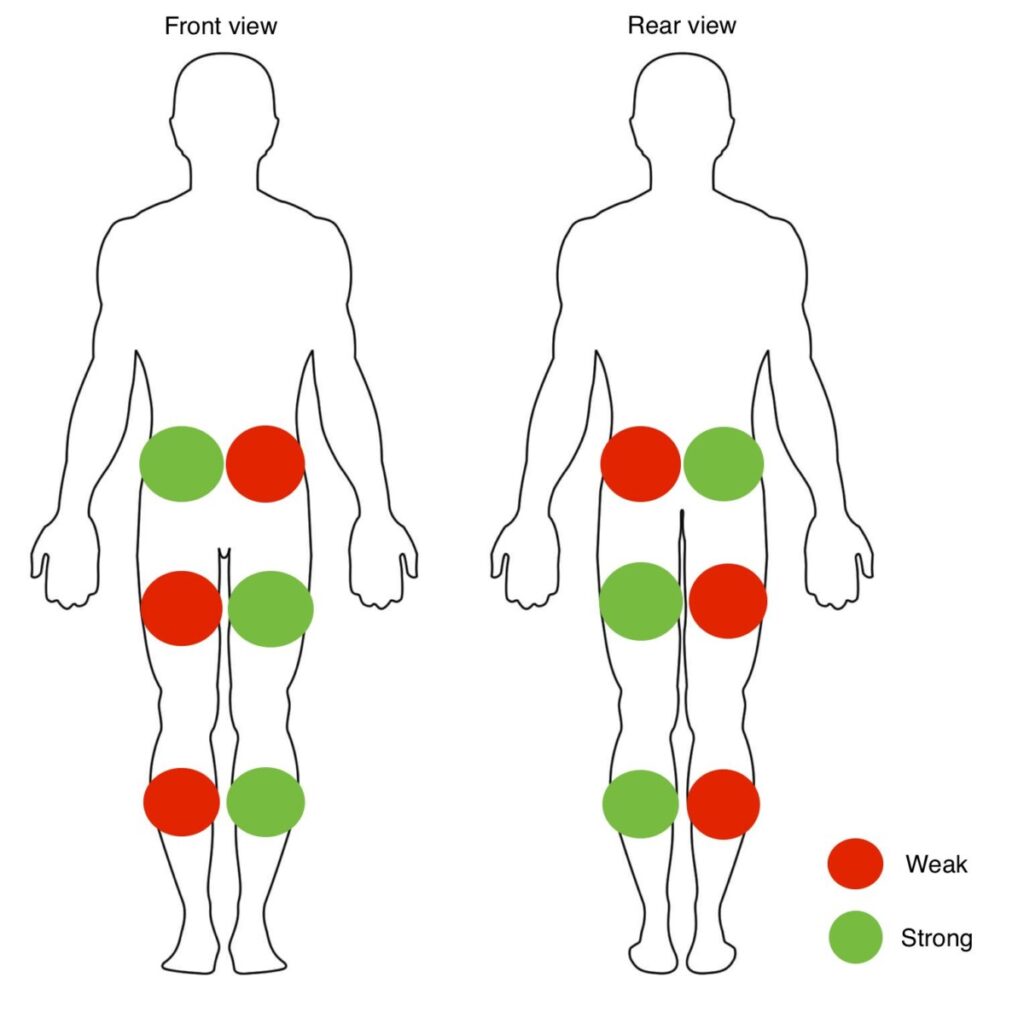In this post we look at why multi joint exercises like the squat don’t work for injury rehab.

Take a look at the image above.
It’s a representation of a person’s strengths and weaknesses.
The red dots show areas of muscle weakness.
Weakness in this case is defined as a significant difference in the amount of force a muscle group can produce when compared to the other side.
As you can see this person has weakness in the quadriceps, hamstrings and calves of their right leg. The muscles on the left side of their trunk also need attention.
Whilst this example is hypothetical, this isn’t a particularly unusual situation. Especially when somebody is struggling to recover from injury.
That said, here’s my question to you, what do you suppose would happen if you asked this person to perform a squat?
More specifically, would any of these weaker muscle groups get stronger after using this exercise for a period of time?
Fortunately for us researchers have tried to answer this very question.
In this study patients that had either undergone anterior cruciate ligament (ACL) reconstruction surgery, or had an injured ACL were asked to squat.
The researchers found that both groups used different squatting strategies when compared to controls.
In both cases this resulted in the leg of the previously injured side not being trained as expected.
More significantly perhaps, these compensation strategies would not have been observable without sophisticated laboratory equipment.
So what does this mean for you?
If you’re finding the exercises you’ve been given aren’t making any significant difference. Or perhaps are even making you feel worse, there’s probably something wrong with the exercises.
In many cases this will be because the exercises involve more than one joint. This will allow your body to compensate around weak muscles.
You don’t necessarily have to be recovering from a serious injury like an ACL tear either. Movement is programmed according to the status of your muscular system.
Unless it’s given no other choice, your central nervous system (CNS) won’t choose to use weak muscles when there are stronger ones available.
That’s not to say there isn’t a time and place for multi joint exercises like the squat or leg press.
What frequently happens however is these exercises are used at the start of exercise programmes, under the misapprehension that every muscle that should be involved actually is.
This is unlikely to be the case. Especially if there’s pain and inflammation present.
Summary
Weak muscles will stay weak unless your CNS is given no choice but to use them.
This will involve switching to single joint exercises where possible and paying close attention to other compensation strategies like speed.
This is logical when you think about it very logical.
Wish I had thought of it.
I am a believer . My body definitely operates that way.
Thanks for your comments Colin.